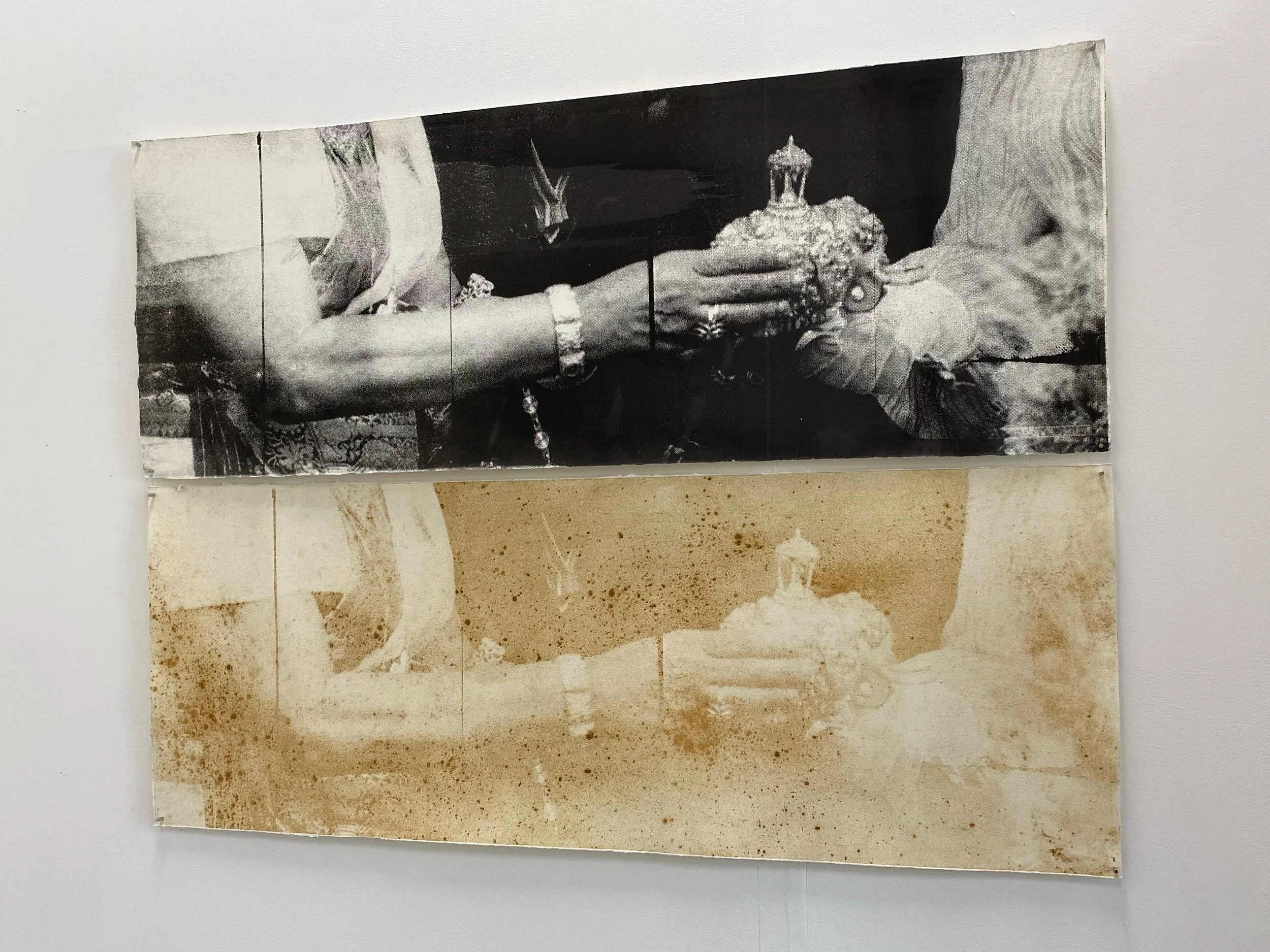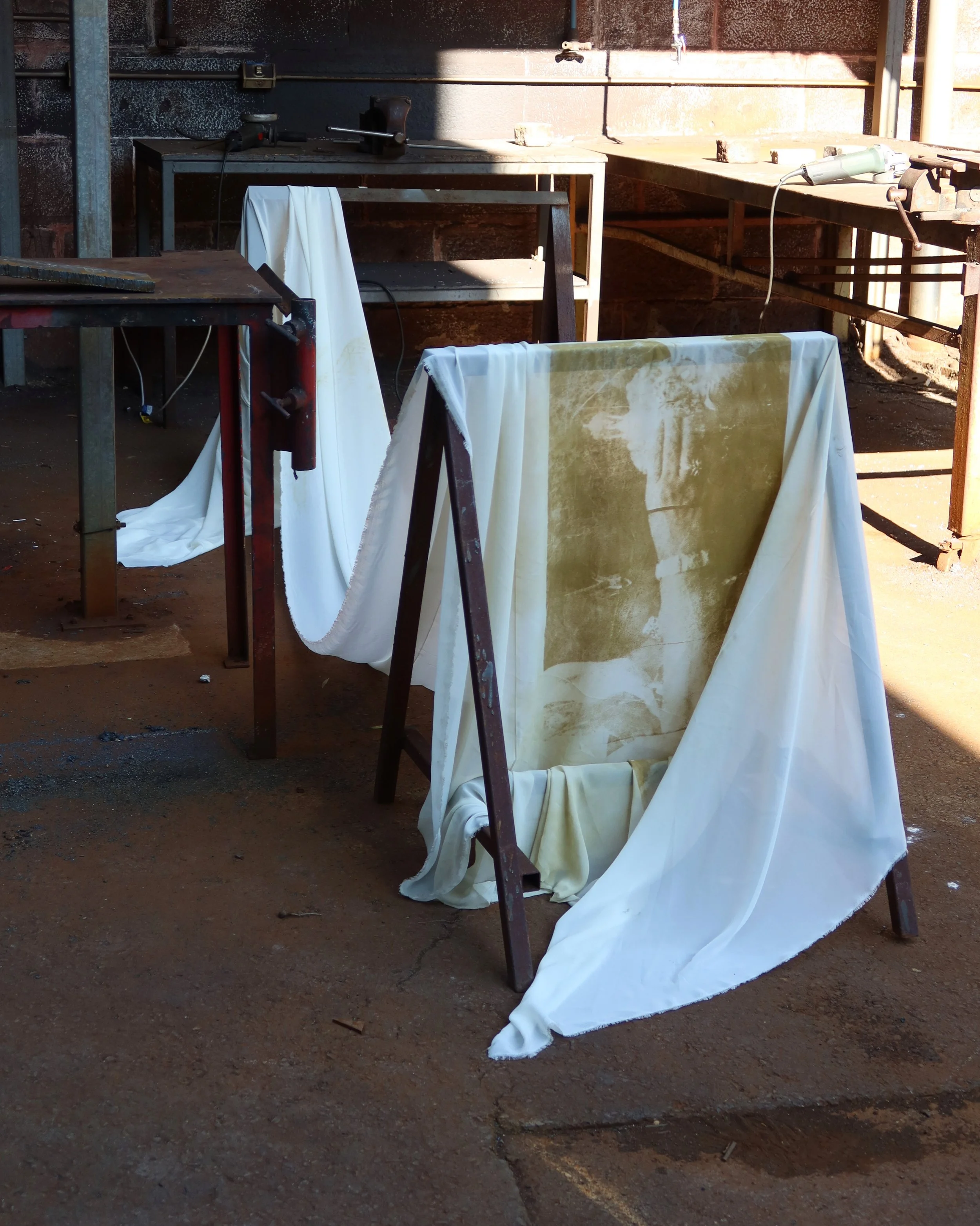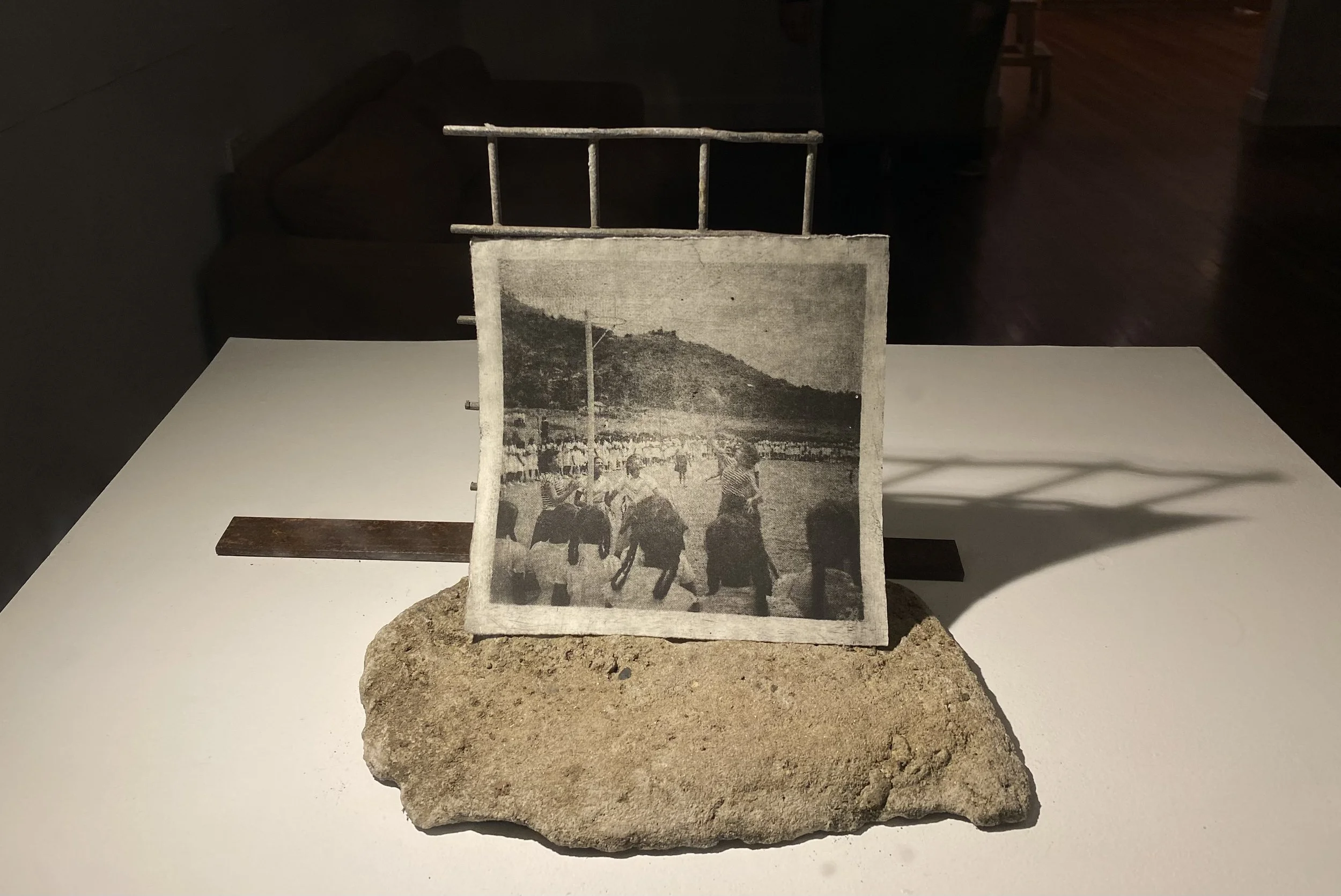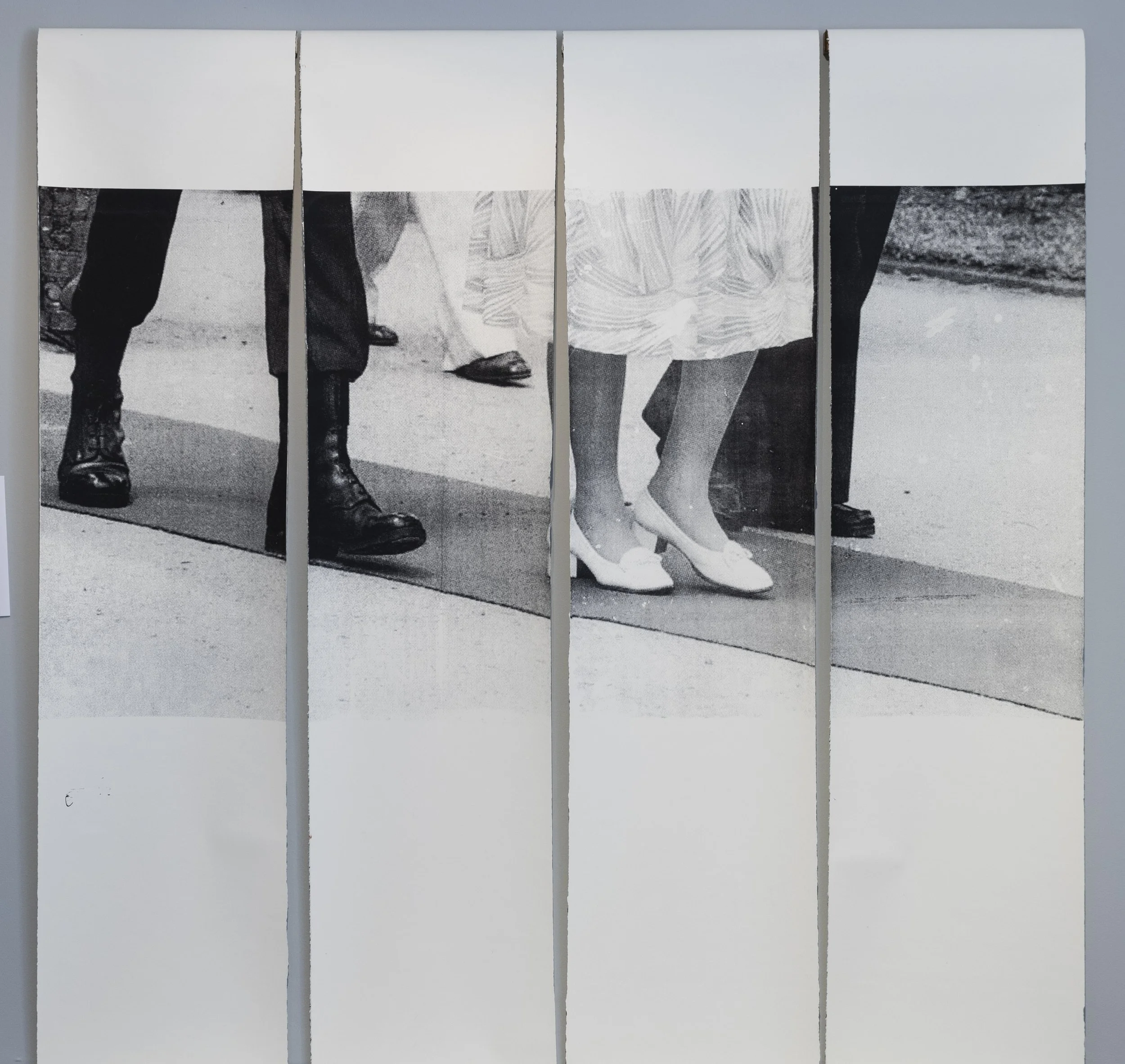Mia van Dort- Gilmore with Untitled (Can you recognise Barbara? series), 2024, screen print on paper, 300 x 267cm.
Mia van Dort-Gilmore
Mia van Dort-Gilmore is a recent graduate from the National Art School. Majoring in Printmaking, her practice investigates cultural memory, identity politics, and post-colonial experiences. Raised on Gadigal land, with a heritage rooted in Sri Lanka, she approaches her work with a commitment to understanding and navigating her intersectional identity within a colonial space.
Van Dort-Gilmore works extensively with printmaking methodologies that engage with themes of 'copy' and 'trace' — echoing the endurance of memory and tradition within modern, often fragmented narratives. She aims to recontextualise archival imagery, encouraging dialogues between past and present, reinvested with meaning, and shared with broader audiences. She is eager to expand her technical and conceptual practice in a setting where art functions both as a personal and collective vehicle of expression and cultural preservation.
Mia van Dort-Gilmore, (above) Untitled (Can you recognise Barbara? series), 2024, screen-print on paper, 40 x 105cm. (below) Untitled (Can you recognise Barbara? series), 2024, silk screen print with henna powder, 40 x 105cm.
Tell us about your creative process. What drives your practice?
My creative process is often in collaboration with pictorial objects within the archive that relate back to my cultural identity and colonialism. I’m drawn to the temporality and weight of a photograph, unfolding a dialogue between past and present in discussion with a lived intersectional experience. Driven by a lack of knowing my practice acts as a tool of protest, an attempt to heal a loss of family history and culture.
Your print works often connect to the earth through the use of natural materials, such as turmeric and henna. What drew you to use these unconventional printing materials and how do they contribute to your exploration of cultural identity and colonialism?
I was first drawn to the familiar poetics of a stain, which encapsulates the tension between absence and presence. This idea became central to my practice as I explored how materiality and process could communicate cultural identity and histories shaped by colonialism.
Through screen printing, I reproduce archival images from Sri Lanka, incorporating natural materials like turmeric and henna powder, found deeply rooted in South Asian culture. These materials create a tangible connection to the earth and tradition, transforming their use into an act of reclaiming and ‘undoing’ cultural erasure.
I also find power in the process itself, where the body becomes intertwined with the act of making. There’s a kinesthetic rhythm to working with these materials, as the dust of the henna powder clings to the lascaux, staining the surface and revealing the image. This interplay between material and movement deepens the relationship between memory, identity, and practice.
Mia van Dort-Gilmore, Untitled (Can you recognise Barbara? series), 2024, silk screen with henna powder on silk, 600 cm.
How do you navigate the intersection of personal, historical and cultural archives?
I navigate the intersection of personal, historical, and cultural archives by embracing the ambiguity each holds. I reflect on both the familiar and unfamiliar elements that connect these archives, allowing them to come together and form a unified whole. My aim is to create a space where multiple layers of memory and history can coexist and shape each other.
What is the significance of erasure as both a subject and a mechanism within your practice, and how does it create space for healing, protest and resistance?
I have felt a deep insecurity of ‘imposter syndrome’ in relation to my identity – I’ve learned to challenge my position of displacement through my art practice as an attempt of ‘undoing' colonial erasure. In discussing the ambiguity behind the archival images the significance of cultural erasure can be understood. A space for healing, protest and resistance is in the resurfacing and repositioning of these images, allowing for the power of pictorial language to speak.
Mia van Dort- Gilmore, Netball game (Can you recognise Barbara? series), 2024, photo etching on paper and found objects, 20 x 20cm.
Are there any female printmakers | artists that influence you?
There are too many! But in first reading this my classmate Sophie Tunks first came to mind. We recently had our grad show and I was invigilating the printmaking space. There was a lady that stood and looked at Sophie's work with such joy and expressed her awe behind the imagination of Sophie's practice. I am in awe of Sophie's practice for exactly that, she constantly challenges the boundaries of printmaking - often bringing it into a sculptural space of curiosity.
Finally, what exciting projects are you working on at the moment?
In looking to the future of my practice, I wish to continue in deepening my exploration of identity and cultural memory, in this I'm hoping to visit Sri Lanka in the coming year. I want to document absolutely everything whilst over there in order to create my own archive attached to Sri Lanka, in order to create a richer sense of cultural identity and further facilitating a richer dialogue between past and present.
Mia van Dort- Gilmore, Untitled (Can you recognise Barbara? series), 2024, screen print on paper, 300 x 267cm.





